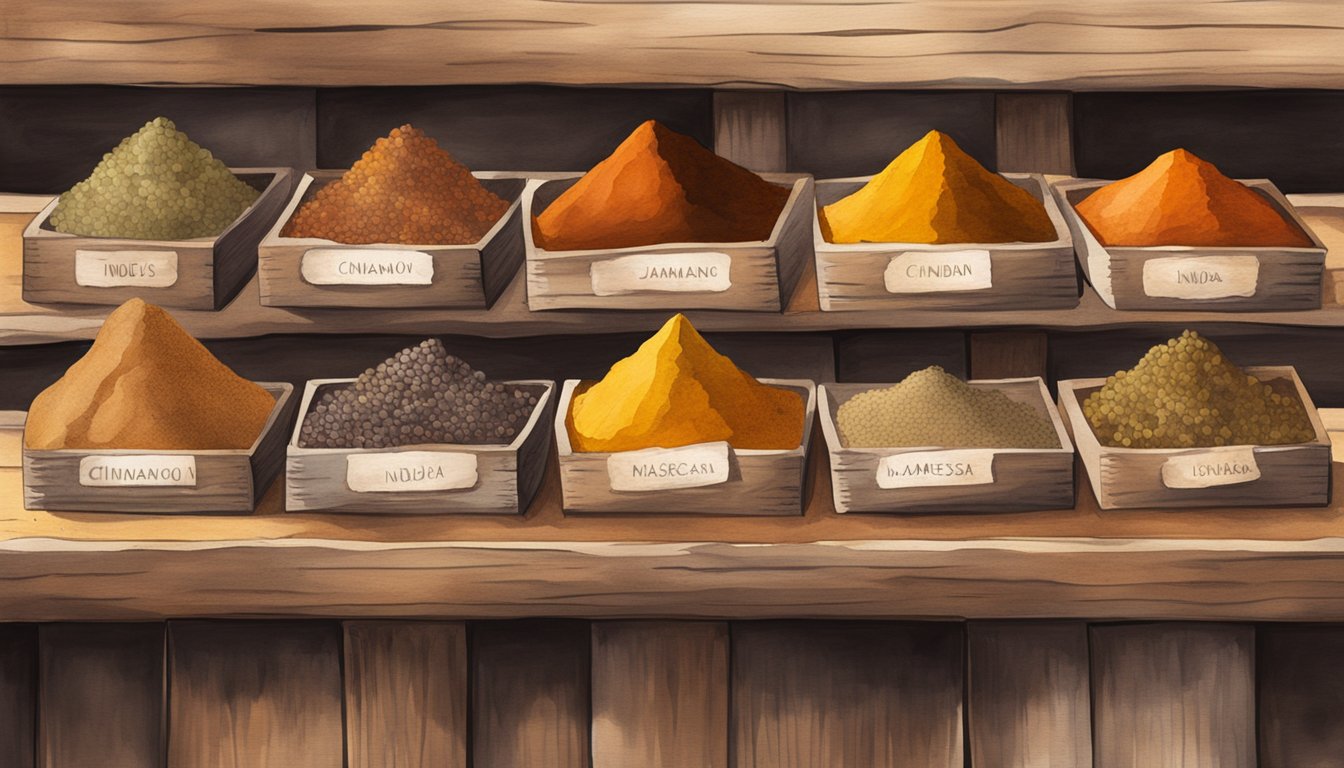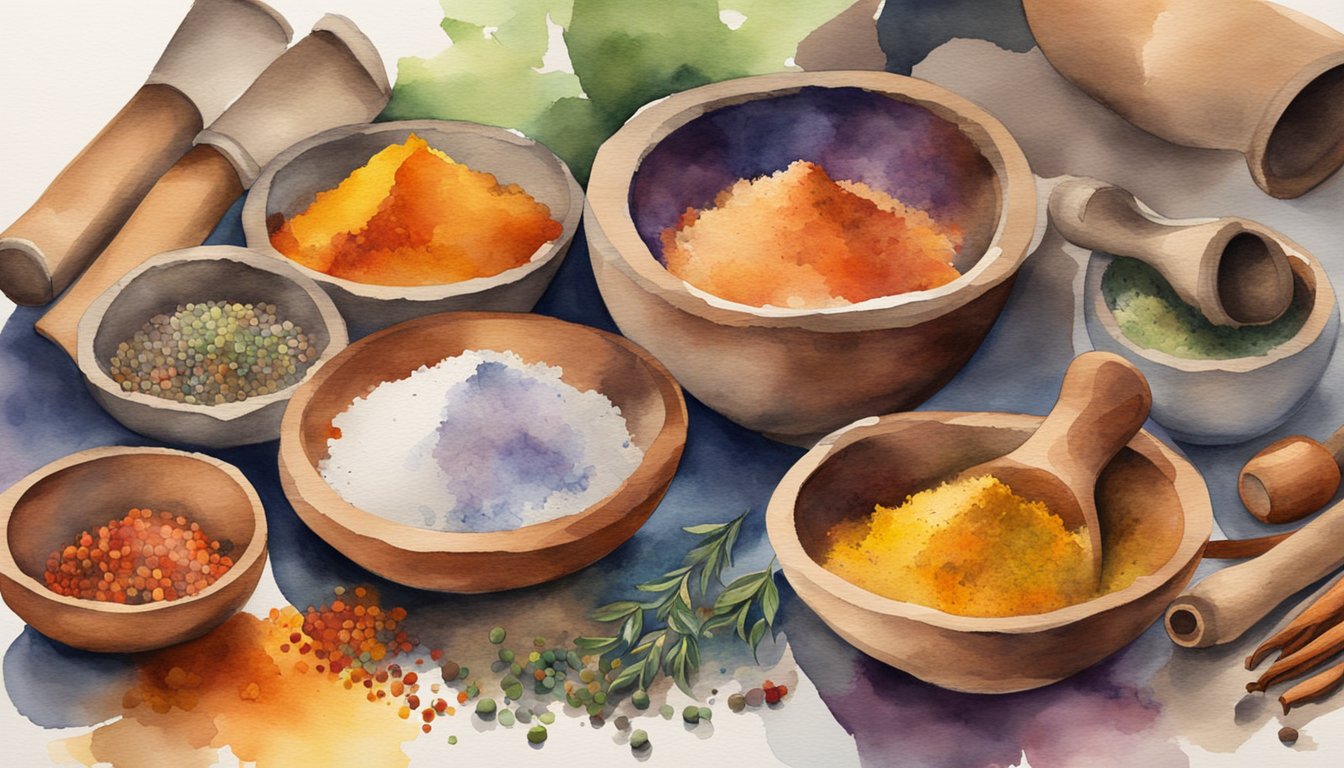Understanding Spices
Spices have shaped both history and palate, offering flavors that define cuisines and a trade that has connected nations.
Historical Significance
The lure of spices has played a critical role in shaping world history. Since ancient times, particularly in China and India, spices have been a cornerstone for both medical treatment and culinary enhancement. The allure of spices led to the establishment of the spice trade routes connecting the East to the Western world, significantly influencing global interaction during the Middle Ages. The spice trade was not just about commerce; it was a catalyst for exploration, leading to the discovery of new worlds in the 16th century.
Culinary Uses
In the kitchen, spices serve multiple purposes: they can be both seasoning and preservatives. Ground spices often find their way into spice blends, imparting a more complex flavor to dishes. Each spice contributes to a refined taste and can transform the simplest ingredients into a culinary experience. Herbs, which are the leaves, flowers, or stems of plants used for flavoring or as a garnish, are often confused with spices, which are typically derived from other plant parts such as seeds, berries, bark, or roots.
Varieties of Spices
Spices come in a dizzying array of forms and origins. From the fragrant vanilla pods of Madagascar to the fiery chilies of India, each spice brings a distinct essence to the table. Spices can be woody, earthy, aromatic, or pungent, and their attributes are as varied as the regions they hail from. The variations in climate and soil in different parts of the world contribute to the unique character and potency of each spice.
Popular Spices and Their Origins

Spices have been celebrated for centuries not only for their ability to flavor and preserve food, but also for their roles in rituals, medicine, and economy. Each spice comes with its own story, often rooted deeply in the soil of distant lands and ancient cultures.
Herbs Versus Spices
While both herbs and spices come from plants and can transform the flavor of food, the key difference lies in which part of the plant they originate from. Herbs typically come from the leafy green parts, and are usually found in temperate regions. Examples include oregano, sage, and coriander. In contrast, spices may come from the seeds, bark, roots, or fruits of plants and trees, often originating in tropical climates. Take, for instance, spices like cinnamon, sourced from bark, or nutmeg, which comes from the seed of its tree.
Specific Spices Profile
For a delightful journey around the globe, let’s peek at various popular spices and their exotic origins:
- Cinnamon: Hailing from Sri Lanka, this sweet and woody spice flavors everything from morning oatmeal to complex curries.
- Cardamom: Native to Southern India, cardamom has a complex sweet and spicy flavor profile, often featured in sweet desserts and savory dishes alike.
- Ginger: Cultivated in Southeast Asia, its peppery sweet taste can be experienced in both fresh and dried forms.
- Black Pepper: Often found next to salt, this pungent spice, which once served as currency, is native to Kerala, India.
- Saffron: Esteemed among spices for its labor-intensive harvesting process, this crimson treasure originates from Greece.
- Turmeric: Known for its vibrant color and association with Indian cuisine, turmeric hails from the Indian subcontinent.
- Cloves: These intensely aromatic flower buds are native to the Maluku Islands in Indonesia, often found in spice blends like garam masala.
- Star Anise: With its beautiful star-shaped pods, this spice is native to China and Vietnam, offering a licorice-like flavor.
These spices have transcended their culinary roles to become symbols of cultural heritage and trade, shaping cuisines and histories around their captivating scents and flavors. They invite us on an aromatic adventure through the diverse landscapes where nature yields its most flavorful treasures.
The Impact of Spices on Health and Lifestyle

Spices have played an influential role in both wellness and the culinary arts for centuries, offering a range of health benefits while also enhancing the flavor profiles of an array of dishes.
Health Benefits
Spices are nature’s little package of both flavor and healing properties. For example, the vibrant yellow spice turmeric is celebrated for its compound curcumin, which has been linked to anti-inflammatory properties that may support a healthy lifestyle. Garlic, used ubiquitously for its potent aroma and taste, also offers benefits for heart health. Meanwhile, cinnamon may contribute to improved blood sugar levels, adding a sweet kick to grains like rice while supporting well-being.
Spices in Modern Cuisines
Modern kitchens often boast a variety of spices, featuring both ground and whole options. Spices like chili pepper introduce heat and a depth of flavor to dishes, appealing to those who savor bold tastes. Meanwhile, herbs such as rosemary, parsley, thyme, marjoram, basil, cilantro, and mint contribute their aromatic qualities to recipes, transforming simple ingredients such as vegetables into exotic creations. They are often the main ingredient in marinades and rubs, bringing a world of flavor to every bite.
Innovative Uses in Cooking
Beyond their traditional uses, spices and culinary herbs find new applications in modern cookery. For example, mint may be used to create refreshing infused waters or as a surprising twist in savory dishes. Chefs are also experimenting with the fusion of spices from different cultures, developing innovative recipes that marry, for example, the heat of chili pepper with the savor of traditional aromatic herbs or the zest of citrus fruits, leading to delightfully unexpected flavors and experiences in each dish.

